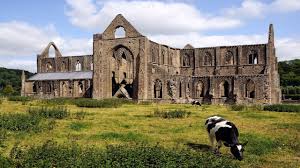 |
| Don Juan by Lord Byron |
Don Juan is one of the great poems in the English language. It is a performance of the rare artistic skill. "Humour, sentiment, adventure, and pathos are thrown together with that some disconcerting incongruity as they are to be found in real life. The style is a clever imitation of the idioms and phrasing of ordinary conversation, used with great cunning for satiric and comic effect."
Byron has efficiently used ottava rima in Don Juan. It is an eight-line stanza, the rhyme scheme of which is ab ab ab cc. The lines are iambic pentameter and the last two lines form a couplet and each line contains eleven syllables.
It was brought from Italian into English by Sir Thomas Wyatt in the first half of the 16th century. Although employed by a number of earlier poets, it is notable especially as the stanza which helped Byron to write the satiric poem, Don Juan.
Byron is a superb artist in his use of irony in Don Juan. In the poem, we find that Donna Inez wants to make her son, Juan, a paragon or an all-around man. She arranges his education carefully. She includes in his syllabus the works of the great authors, having no least touch of sexuality.
She does not allow him to mix with bad boys. But it is ironic that his later life is dominated by sexual love. It is also ironic that though Inez wants to keep her son aloof from any immorality, she herself was and is involved in an illicit affair with Alfonso.
He uses allusion very successfully. To point out the loose morality of Donna Inez, Byron refers to the Spartan ladies who were women of loose morals. They were not moved by the death of their husbands. If their husbands were killed, they cheerfully chose next. Again, Byron compares Juan to Medea, the heroine of Ovo Miss Medea, to describe the craziness of Juan's love for Julia.
In Don Juan Byron uses digressions, that is, inserts materials related or distantly related to the main subject. In the poem, the recession is sometimes so long that it becomes an excursus. Byron digressions to describe the characters of the poem such as Jose, Inez, and Julia. He has taken many stanzas to describe these characters. He has taken several stanzas to describe great heroes and
to describe various types of sweet things.
His style of selecting a hero for his epic is different from others. He selects an uncommon hero to expose the hypocrisy and corruption of high society. Most epic poets start in the middle of the story and the hero expresses the past by way of the episode. But Byron's method is different. He says:
That is the usual method, but not mine;My way is to begin with the beginning.
Though a romantic, Byron has a peculiar fascination for Augustan poetic diction. He abandons the romantic view of the imagination and practices a new realistic art. He is a realist in poetry and seeks to present the pictures of social life as he viewed in his life. In Don Juan he says:
I mean to show things really as they areNot as they ought to be.
However, much of Byron's poetry seems tawdry and commonplace. He is often noisy and declamatory rather than poetical. Since he has to write in haste, he often becomes clumsy and loose But in spite of his faults "he has amazing vitality and power, and in his most impassioned moods his verse rushes on like a torrent."




0 Comments